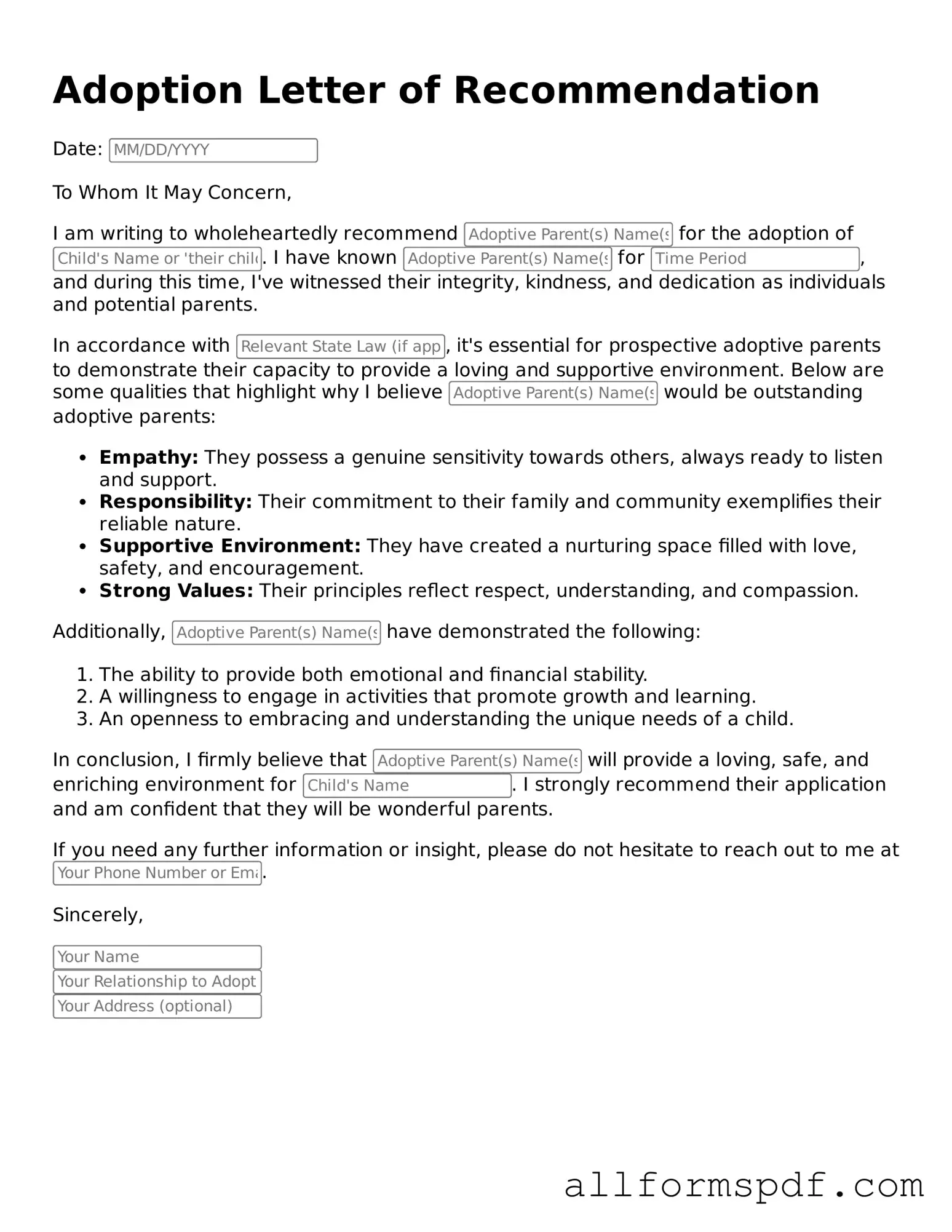Printable Adoption Letter of Recommendation Form
The Adoption Letter of Recommendation form is a crucial document that supports an individual's application to adopt a child. It provides insights into the prospective parent's character, capabilities, and readiness for the responsibilities of adoption. This form plays a significant role in the evaluation process conducted by adoption agencies and courts.
Create My Adoption Letter of Recommendation Now
